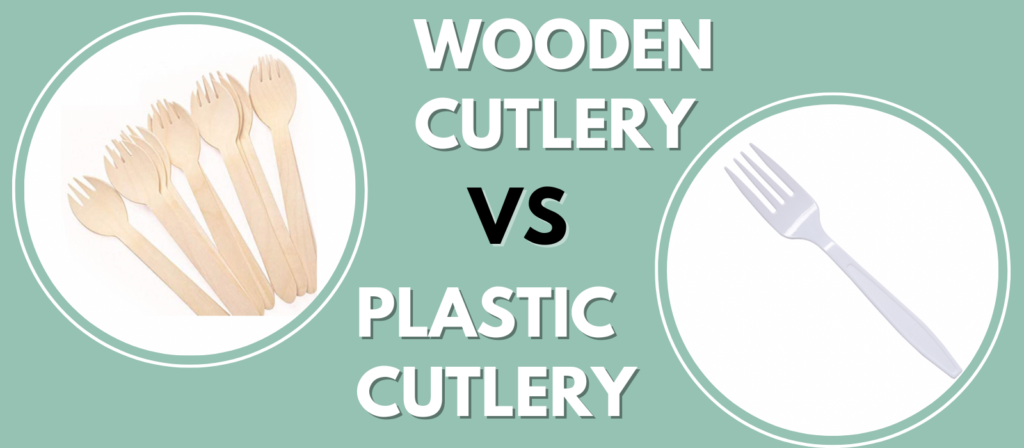
Probably one of the best innovations of mankind that we still enjoy today is the creation of cutlery. It comes as an inseparable part of our daily lives that can be seen in whichever part of the world. While there are still some cultures that eat with their hands, most of the modern world has heavily relied on the use of cutlery as a hygienic and sanitary way of eating. Nowadays, you can see cutlery in various forms, be it plastic, wooden, metal, or even recyclable material.
What is Plastic Cutlery?
Plastic cutlery is one of the most sought-after and heavily used disposable dining utensils. It’s ubiquitous and can be seen in picnics, fast food chains, takeouts—just virtually anywhere.
Plastic dinnerware is usually made out of two materials, polypropylene or polystyrene. These materials are the cheapest and most durable options in manufacturing plastic cutlery. Apart from economical reasons, they can withstand pressure and force making them highly durable—perfect for transport and large-scale food production and supplies.
Plastic cutlery comes in various forms, namely lightweight, medium-weight, and heavy-weight, depending on your particular need. You can also get specialty plastic utensils, such as plastic Chinese spoons used for a variety of Asian soups and desserts, or perhaps sporks which are quite versatile and handy to pack. You could even find plastic knives you can use for slicing and cutting cooked meats or for spreading various spreads such as butter, cream, and jams on bread.
Why You Should Use Plastic Cutlery?
Economy – Production of plastic utensils is indeed cost-effective that’s why it has remained as a solid choice for most suppliers worldwide. Buying them in bulk saves you money as they are cheaper when bought in large volumes.
Durability – These materials are flexible and would not break easily making it perfect for packaging and delivery. So it’s not unusual to see your local takeout or favorite neighborhood fastfood joint using plastic as their go-to cutlery.
Hygiene – Plastic cutlery doesn’t need any washing or cleaning. You can easily dispose of it and most plastic dinner utensils are manufactured in such a way that it is resistant to bacteria or germs.
Heat tolerance – Most plastics can withstand up to 250°F of heat before losing its form.
Why You Should Not Use Plastic Cutlery
Non-compostable – Unlike other materials, polystyrene and polypropylene are not compostable. It is harder to break down to be reused for newer products.
Sustainability – Since most state laws call for an ethical and more responsible way of creating materials, sadly, plastic does not meet the mark. It is also not advisable as other sturdier materials, such as metal, can last for a longer time compared to brittle plastic.
Aesthetics – Although there have been many innovations in marketing in terms of improving the look and feel of plastic cutlery, it still isn’t as stylish as its metal and wooden counterparts. It’s rare to find beautifully designed plastic cutlery, especially if they are just disposed of right away.
What is Wooden Cutlery?
Wooden cutlery has to be one of the best and most preferred cooking and dining utensils in any kitchen—from professional or industrial-grade kitchens to households. It can be made out of a wide variety of wood types such as birch, pine, willow, and poplar. It’s also one of the most expensive options on the market.
Since it is all organic, it is best used in various cooking methods. From wooden spoons to mortars, rolling pins, and many chopping boards, wood looks and feels great on your hands. We currently see a revolution in terms of cutlery use as more people opt for sustainable materials for their cutlery, and wood is one great option out there.
Advantages of Using Wooden Cutlery
Sustainability – When it comes to renewable sources that can be easily composted or recycled, wood seems to offer the best solution. Most kitchens and environmentalists advocate for the use of wooden materials as a replacement for plastics in terms of food preparation and consumption.
Aesthetics – When carefully sanded and smoothed out, wooden cutlery is a sight to behold. Most wooden utensils are prized not just because of their ergonomics but because they just look perfect especially in any table setting.
Environmental-friendly – Many manufacturers have resorted to materials like bamboo to create cutlery as the plant is fast-growing and very environmentally friendly. It doesn’t create much carbon footprint, unlike its plastic counterparts
Disadvantages of Using Wooden Cutlery
Hygiene & sanitation – Since wood is a porous material, it can quickly absorb moisture and bacteria from wood and water. It’s not advisable to be reused, especially in a restaurant setting. Additionally, some wooden cutleries retain strong odors from food which is undesirable in most cases.
Splintering – Unlike metal and plastic, since wood is an organic material, it may cause breakage and splintering if not stored well.
Why Choose Wooden Cutlery Over Plastic Cutlery?
For people who advocate for a more sustainable way of living, choosing wood cutlery is a no-brainer. Despite it being a more expensive option than plastics and metals, wooden cutlery gets the job done and is safer and better for the environment.
There are also many types of wooden cutlery that can fit your every need. And what’s best, it’s a superior replacement for plastics, especially for disposable use.

